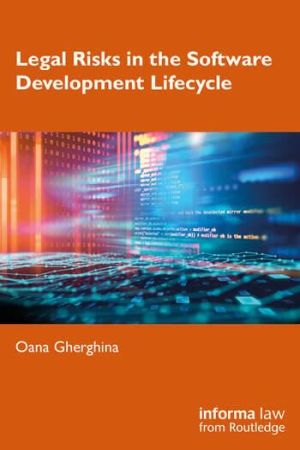
Legal Risks in the Software Development Lifecycle addresses the growing complexity of software development as both a technical and legal discipline. As the digital economy expands, software has become a core infrastructure asset whose lifecycle demands rigorous and enforceable contractual governance. This book analyses how legal risks arise and evolve across the Software Development Lifecycle (SDLC), providing a systematic account of the planning, delivery, and long-term maintenance of software projects.
The book takes readers through the entire SDLC, explaining each phase’s technical purpose, the role and obligations of the parties involved, and the contractual documentation required to secure compliance and accountability. At every stage, it identifies the principal legal risks and demonstrates how they can be prevented through careful planning, well-defined deliverables, and tailored contractual provisions. Rather than focusing on litigation outcomes, the book emphasizes preventive strategies, providing readers with a structured roadmap to anticipate disputes before they arise. Sample clauses and checklists are included to highlight practical solutions, but the core value lies in its systematic explanation of processes, responsibilities, and risk-management mechanisms. Covering major contractual models such as Fixed-Price, Time & Material, Agile, Hybrid, and Milestone-based agreements, it highlights their advantages, limitations, and common points of dispute, while offering strategies to structure payments, allocate intellectual property rights, and manage scope changes effectively.
The book’s approach is multidisciplinary. It is written for lawyers and legal advisors seeking to understand technical processes and draft precise, enforceable agreements; for project managers and clients who need to anticipate and manage contractual obligations; for software developers and vendors who want to align deliverables with contract terms and regulatory requirements; for judges, arbitrators, and mediators resolving IT-related disputes; and for students and researchers in law, technology and business, seeking a bridge between theory and practice.